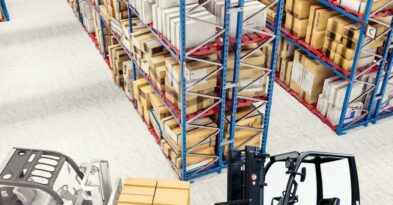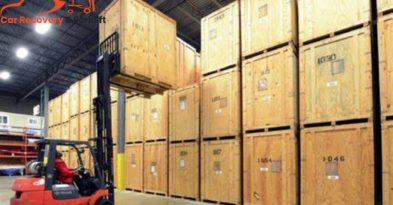Myths about electric forklifts
Myths about electric forklifts for many users of material handling equipment, electric forklifts continue to be the machines of the future to this day. However, with the introduction of high-performance electric forklifts with asynchronous motors to the market back in 2005, with the advent of new types of batteries in recent years (for example, lithium-ion, fuel cells are also being developed)
the future has already arrived. Those who are still unaware of the capabilities of today’s electric forklifts are missing out on a huge opportunity. It’s not always smart to be a die-hard ICE forklift fan! Here is a brief overview of some common misconceptions about electric forklifts that may negatively influence your next equipment purchase.
Read More : Hamdan Forklifts and Car Recovery
“Electric forklifts are expensive to buy, operate, maintain and repair”
While an electric forklift may cost more, it will pay for itself within a maximum of 24 months when all running costs are included. Cost optimizations include less life cycle depreciation, extended life, reduced maintenance and repair costs, energy consumption, labor costs, tire wear and reduced downtime. This gap becomes larger the higher the load capacity of the forklift.
Maintenance costs and energy consumption increase exponentially as lifting capacity increases. Even a cursory analysis of the total operating costs of an ICE vs. electric forklift will easily show the savings and faster return on initial investment when purchasing an electric forklift. For example, electric forklifts have 90 parts compared to 1,100 parts on an ICE forklift.
“Battery charge is not enough for my mode of operation”
Not all electric forklifts are the same. Each electric forklift can be equipped with completely different power systems (battery and charger) to meet specific operational requirements. Whether it’s a one-shift or three-shift operation, you can always think of a smart battery usage plan. This can be the use of replaceable batteries or Li-ion batteries with a break for recharging, etc.
“Electric forklifts have the limited capacity”
It should be noted that modern electric forklifts are produced with a load capacity of up to 20 tons. With the growing demand for heavy duty forklifts to meet the Tier 4 environmental standard, the electric unit is a clean and powerful alternative. Electric forklifts are no longer tied to the usual 1.5 to 5.0 ton capacity range. Now mines, mills, factories, port facilities, lumber, pulp and paper companies can choose electric forklifts of various capacities.
This means they have fewer moving parts that can fail and need to be replaced. In fact, the annual maintenance and repair cost of an electric forklift is approximately one-third that of an equivalent ICE forklift.
If we add to this the savings on the cost of electricity, lubricants, etc., then the conclusions will be unambiguous. The annual maintenance and repair costs for an electric forklift are approximately one-third that of a comparable ICE forklift. If we add to this the savings on the cost of electricity, lubricants, etc., then the conclusions will be unambiguous.
The annual maintenance and repair costs for an electric forklift are approximately one-third that of a comparable ICE forklift. If we add to this the savings on the cost of electricity, lubricants, etc., then the conclusions will be unambiguous
Read More : Electric Forklift Vs. IC Forklift
“Electric forklifts are too slow”
Electric forklifts actually have faster travel and lifting speeds than many of their ICE-powered counterparts. This is because the technology behind electric motors allows them to instantly use 100% of the available torque. When the operator of the electric forklift presses the accelerator pedal, switching from “0” to the maximum set speed is almost instantaneous.
Let’s say you have placed an ICE-driven forklift and an electric forklift side by side on site and you have to walk the same distance. If they start moving at the same time, the electric forklift will likely be halfway to its destination before the ICE forklift reaches top speed.











Leave a Reply